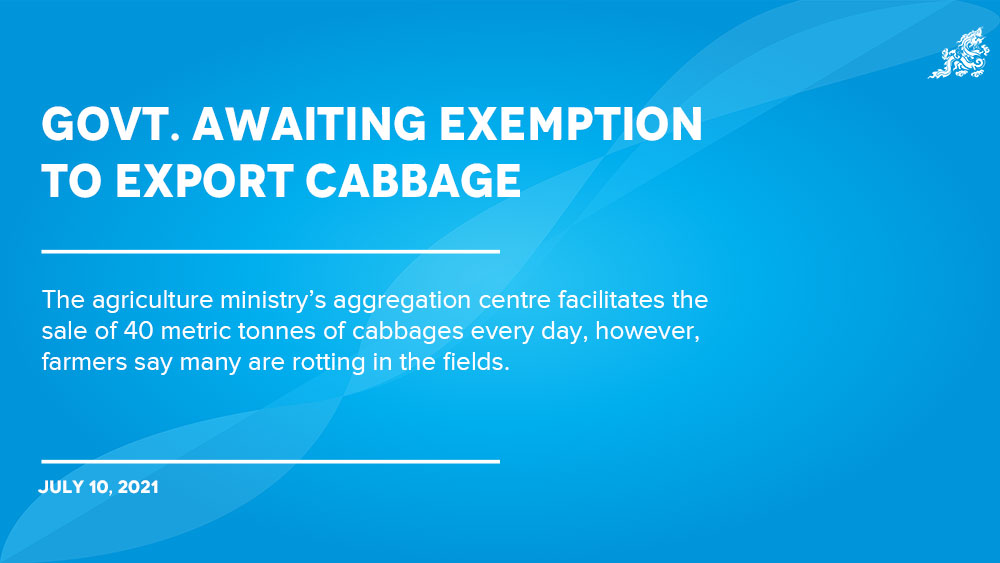Phub Dem | Paro
The agriculture ministry’s aggregation centre facilitates the sale of 40 metric tonnes of cabbages every day, however, farmers say many are rotting in the fields.
Cabbage growers of Naja and Dawakha gewogs are still facing challenges in marketing the vegetable.
Economic Affairs Minister Loknath Sharma during the meet the press session yesterday said that the government was in constant touch with Indian Embassy to address the issue at the earliest.
Both Bhutan and India enjoyed informal trade before the pandemic, with numerous entry and exit points along the southern border.
However, with the onset of the pandemic, considering the need of the hour, countries began to streamline customs points and came up with formal trade requirements.
Lyonpo said that the issue arose when traders could not produce the required clearance at the last moment.
For instance, to include vegetables and fruits into the import list, the requirements include Pest risk analysis clearance, plant quarantine order followed by a Phytosanitary and sanitary certificate.
The country has pest risk analysis clearance for five agricultural produce—mandarin, apple, ginger, potato and cardamom.
Although the government submitted the list of additional seven commodities to the export list to the Indian government, including chillies, beans, cabbages, cauliflowers, carrots, peas, and soybeans, the government couldn’t get the approval yet.
According to lyonpo, the government has requested an exemption to import cabbage for this season, before the pest risk analysis approval which will take some months. “We have asked to expedite the approval for cabbage and carrot before the season ends.”
While the country might face some issues this season, he said that the ministry was already working towards formalising the requirement to avoid future complications. “The Indian embassy assured to expedite the process, and we are waiting for positive responses.”
Foreseeing such complications, Paro’s agriculture officer Tandin said that the agriculture office informed farmers about the risk, but farmers paid no heed to the suggestions.
He said the field officials recommended farmers grow beans, onion, broccoli and cauliflower, which has demand from domestic consumers. “As growing cabbage is easier and production is high, no one is willing to listen.”
He said the dzongkhag stopped supplying cabbage seeds, adding that it was challenging to change farmer’s preferences.
In the meantime, sources said that the aggregation centre at Damchhu has been sending surplus cabbage to the National Post Harvest centre and private cold storage at Satsham in Paro.
An official with the centre said they had been transporting the cabbage to Gelephu directly from the farms.
Today, Tandin said that only three chiwogs harvest the cabbages, but four more chiwogs will enter the market in a few months.
Farmers, however, have no option.
Cabbage growers say that the vegetable is their source of income, and they depend on it.
Jampel said that the production of beans and broccoli was lesser in comparison to cabbage. “If one farmer grows beans, everyone will follow, flooding the market with the same vegetable. It is difficult.”
Edited by Tshering Palden


